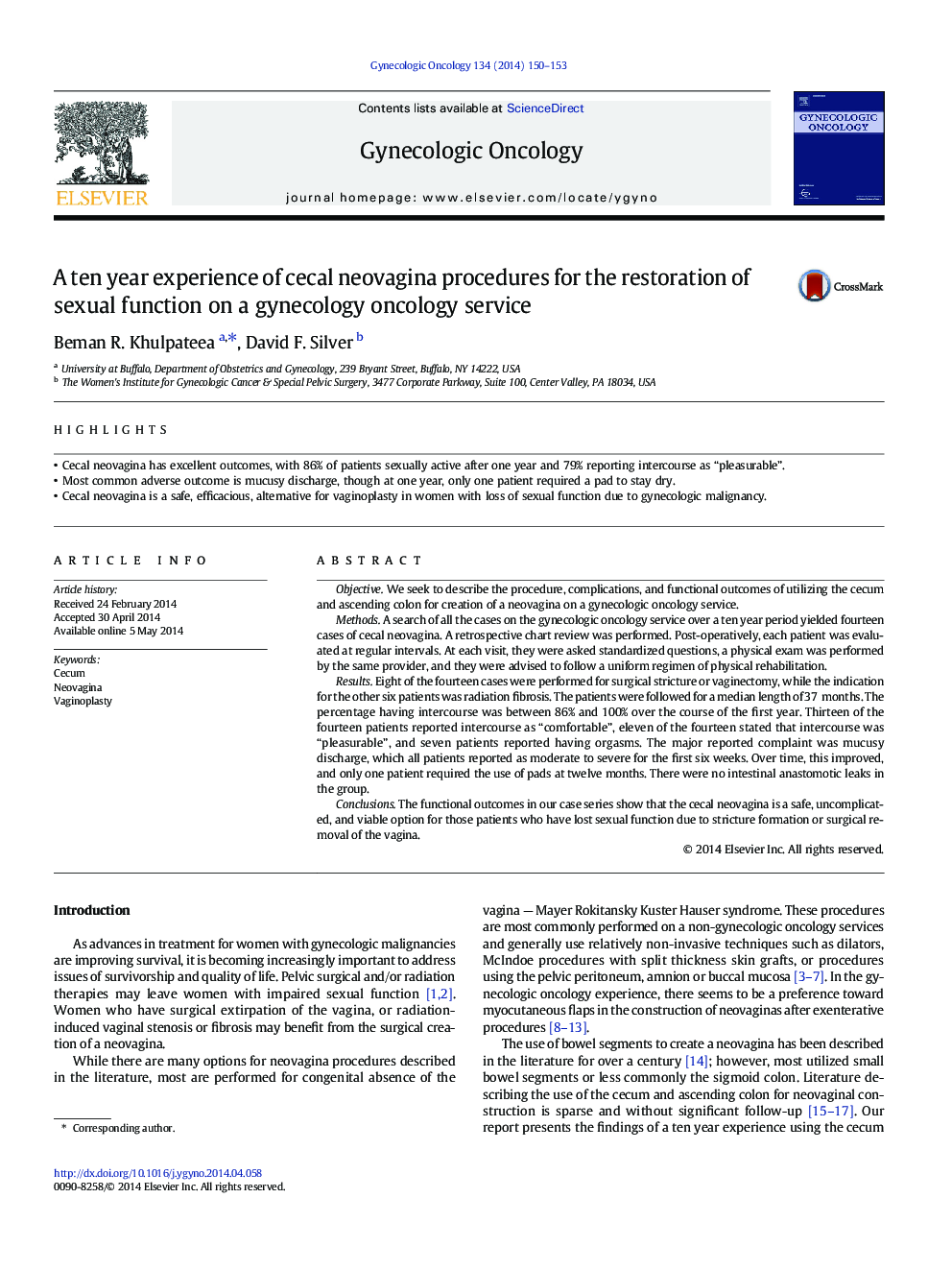| کد مقاله | کد نشریه | سال انتشار | مقاله انگلیسی | نسخه تمام متن |
|---|---|---|---|---|
| 3944573 | 1254215 | 2014 | 4 صفحه PDF | دانلود رایگان |
• Cecal neovagina has excellent outcomes, with 86% of patients sexually active after one year and 79% reporting intercourse as “pleasurable”.
• Most common adverse outcome is mucusy discharge, though at one year, only one patient required a pad to stay dry.
• Cecal neovagina is a safe, efficacious, alternative for vaginoplasty in women with loss of sexual function due to gynecologic malignancy.
ObjectiveWe seek to describe the procedure, complications, and functional outcomes of utilizing the cecum and ascending colon for creation of a neovagina on a gynecologic oncology service.MethodsA search of all the cases on the gynecologic oncology service over a ten year period yielded fourteen cases of cecal neovagina. A retrospective chart review was performed. Post-operatively, each patient was evaluated at regular intervals. At each visit, they were asked standardized questions, a physical exam was performed by the same provider, and they were advised to follow a uniform regimen of physical rehabilitation.ResultsEight of the fourteen cases were performed for surgical stricture or vaginectomy, while the indication for the other six patients was radiation fibrosis. The patients were followed for a median length of 37 months. The percentage having intercourse was between 86% and 100% over the course of the first year. Thirteen of the fourteen patients reported intercourse as “comfortable”, eleven of the fourteen stated that intercourse was “pleasurable”, and seven patients reported having orgasms. The major reported complaint was mucusy discharge, which all patients reported as moderate to severe for the first six weeks. Over time, this improved, and only one patient required the use of pads at twelve months. There were no intestinal anastomotic leaks in the group.ConclusionsThe functional outcomes in our case series show that the cecal neovagina is a safe, uncomplicated, and viable option for those patients who have lost sexual function due to stricture formation or surgical removal of the vagina.
Journal: Gynecologic Oncology - Volume 134, Issue 1, July 2014, Pages 150–153
